
- 7种形式的Android Dialog使用实例
- Android IPC机制利用Messenger实现跨进程通信
- Android Mms之:对话与联系人关联的总结详解
- Android游戏开发 自定义手势--输入法手势技术
- Android自定义控件之广告条滚动效果
- [Android开发视频教学]01_25_Service初步(一)
- Android特效之水波纹的实现
- Android五大布局与实际应用详解
- Android通过反射实现强制停止应用程序的方法
- 在AndroidManifest.xml中uses-sdk内属性意思
- android 定时启动\取消小例子
- Android提高之SurfaceView与多线程的混搭实例
- Android 倒影算法的实现代码
- Android中生成、使用Json数据实例
- Android自定义View实现拖动选择按钮
- android RadioButton和CheckBox组件的使用方法
- Android开发之开发者头条(一)启动页实现
- Android短信发送器实现方法
- 详细解读Android系统中的application标签
- Android使用criteria选择合适的地理位置服务实现方法
- Android获取设备CPU核数、时钟频率以及内存大小的方法
- Android布局之LinearLayout自定义高亮背景的方法
- WAC启动Android模拟器 transfer error: Read-only file system错误解决方法
- 安卓(Android)ListView 显示图片文字
- Android App开发中自定义View和ViewGroup的实例教程
- Android百度地图自定义公交路线导航
- Android编程判断当前指定App是否在前台的方法
- 基于Android 实现图片平移、缩放、旋转同时进行
- Android编程获取图片和视频缩略图的方法
- android闪关灯的开启和关闭方法代码实例
Android App仿QQ制作Material Design风格沉浸式状态栏
一、概述
近期注意到QQ新版使用了沉浸式状态栏,ok,先声明一下效果图:

恩,接下来正题。
首先只有大于等于4.4版本支持这个半透明状态栏的效果,但是4.4和5.0的显示效果有一定的差异,所有本文内容为:
1.如何实现半透明状态栏效果在大于4.4版本之上。
2.如何让4.4的效果与5.0的效果尽可能一致。
先贴下模拟器效果图,以便和实现过程中做下对比
4.4 模拟器
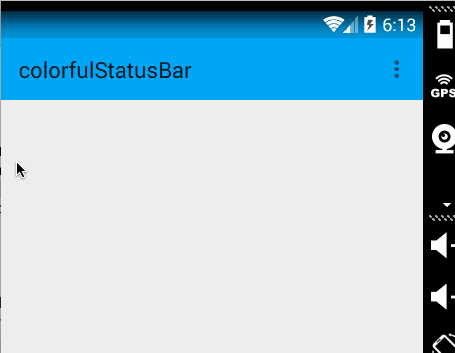
5.x 真机
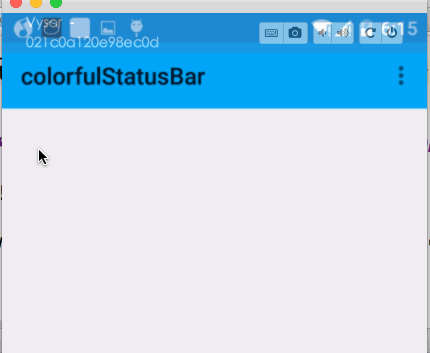
二、实现半透明状态栏
因为本例使用了NavigationView,所以布局代码稍多,当然如果你不需要,可以自己进行筛减。
注意引入相关依赖:
compile 'com.android.support:appcompat-v7:22.2.1' compile 'com.android.support:support-v4:22.2.1' compile 'com.android.support:design:22.2.0'
1、colors.xml 和 styles.xml
首先我们定义几个颜色:
res/values/color.xml
<?xml version="1.0" encoding="utf-8"?> <resources> <color name="primary">#FF03A9F4</color> <color name="primary_dark">#FF0288D1</color> <color name="status_bar_color">@color/primary_dark</color> </resources>
下面定义几个styles.xml
注意文件夹的路径:
values/styles.xml
<resources>
<style name="BaseAppTheme" parent="Theme.AppCompat.Light.NoActionBar">
<!-- Customize your theme here. -->
<item name="colorPrimary">@color/primary</item>
<item name="colorPrimaryDark">@color/primary_dark</item>
<item name="colorAccent">#FF4081</item>
</style>
<!-- Base application theme. -->
<style name="AppTheme" parent="@style/BaseAppTheme">
</style>
</resources>
values-v19
<resources>
<style name="AppTheme" parent="@style/BaseAppTheme">
<item name="android:windowTranslucentStatus">true</item>
</style>
</resources>
ok,这个没撒说的。注意我们的主题是基于NoActionBar的,Android:windowTranslucentStatus这个属性是v19开始引入的。
2、布局文件
activity_main.xml
<android.support.v4.widget.DrawerLayout
xmlns:android="http://schemas.android.com/apk/res/android"
xmlns:app="http://schemas.android.com/apk/res-auto"
xmlns:tools="http://schemas.android.com/tools"
android:layout_width="match_parent"
android:layout_height="match_parent"
>
<LinearLayout
android:id="@+id/id_main_content"
android:layout_width="match_parent"
android:layout_height="match_parent"
android:orientation="vertical">
<android.support.v7.widget.Toolbar
android:id="@+id/id_toolbar"
android:layout_width="match_parent"
android:layout_height="wrap_content"
android:background="?attr/colorPrimary"
android:fitsSystemWindows="true"
app:popupTheme="@style/ThemeOverlay.AppCompat.Light"/>
<TextView
android:id="@+id/id_tv_content"
android:layout_width="match_parent"
android:layout_height="0dp"
android:layout_weight="1"
android:gravity="center"
android:text="HelloWorld"
android:textSize="30sp"/>
</LinearLayout>
<android.support.design.widget.NavigationView
android:id="@+id/id_nv_menu"
android:layout_width="match_parent"
android:layout_height="match_parent"
android:layout_gravity="start"
android:fitsSystemWindows="true"
app:headerLayout="@layout/header_just_username"
app:menu="@menu/menu_drawer"
/>
</android.support.v4.widget.DrawerLayout>
DrawerLayout内部一个LinearLayout作为内容区域,一个NavigationView作为菜单。
注意下Toolbar的高度设置为wrap_content。
然后我们的NavigationView中又依赖一个布局文件和一个menu的文件。
header_just_username.xml
<?xml version="1.0" encoding="utf-8"?>
<RelativeLayout xmlns:android="http://schemas.android.com/apk/res/android"
android:layout_width="match_parent"
android:layout_height="192dp"
android:background="?attr/colorPrimaryDark"
android:orientation="vertical"
android:padding="16dp"
android:fitsSystemWindows="true"
android:theme="@style/ThemeOverlay.AppCompat.Dark">
<TextView
android:id="@+id/id_link"
android:layout_width="wrap_content"
android:layout_height="wrap_content"
android:layout_alignParentBottom="true"
android:layout_marginBottom="16dp"
android:text="http://blog.csdn.net/lmj623565791"/>
<TextView
android:id="@+id/id_username"
android:layout_width="wrap_content"
android:layout_height="wrap_content"
android:layout_above="@id/id_link"
android:text="Zhang Hongyang"/>
<ImageView
android:layout_width="72dp"
android:layout_height="72dp"
android:layout_above="@id/id_username"
android:layout_marginBottom="16dp"
android:src="@mipmap/ic_launcher"/>
</RelativeLayout>
menu的文件就不贴了,更加详细的可以去参考Android 自己实现 NavigationView [Design Support Library(1)]。
大体看完布局文件以后,有几个点要特别注意:
(1)ToolBar高度设置为wrap_content
(2)ToolBar添加属性android:fitsSystemWindows="true"
(3)header_just_username.xml的跟布局RelativeLayout,添加属性android:fitsSystemWindows="true"
(4)android:fitsSystemWindows这个属性,主要是通过调整当前设置这个属性的view的padding去为我们的status_bar留下空间。
根据上面的解释,如果你不写,那么状态栏和Toolbar就会有挤一块的感觉了,类似会这样:

ok,最后看下代码。
3、Activity的代码
package com.zhy.colorfulstatusbar;
import android.os.Bundle;
import android.support.v7.app.AppCompatActivity;
import android.support.v7.widget.Toolbar;
public class MainActivity extends AppCompatActivity
{
@Override
protected void onCreate(Bundle savedInstanceState)
{
super.onCreate(savedInstanceState);
setContentView(R.layout.activity_main);
Toolbar toolbar = (Toolbar) findViewById(R.id.id_toolbar);
setSupportActionBar(toolbar);
//StatusBarCompat.compat(this, getResources().getColor(R.color.status_bar_color));
//StatusBarCompat.compat(this);
}
}
没撒说的,就是setSupportActionBar。
那么现在4.4的效果图是:
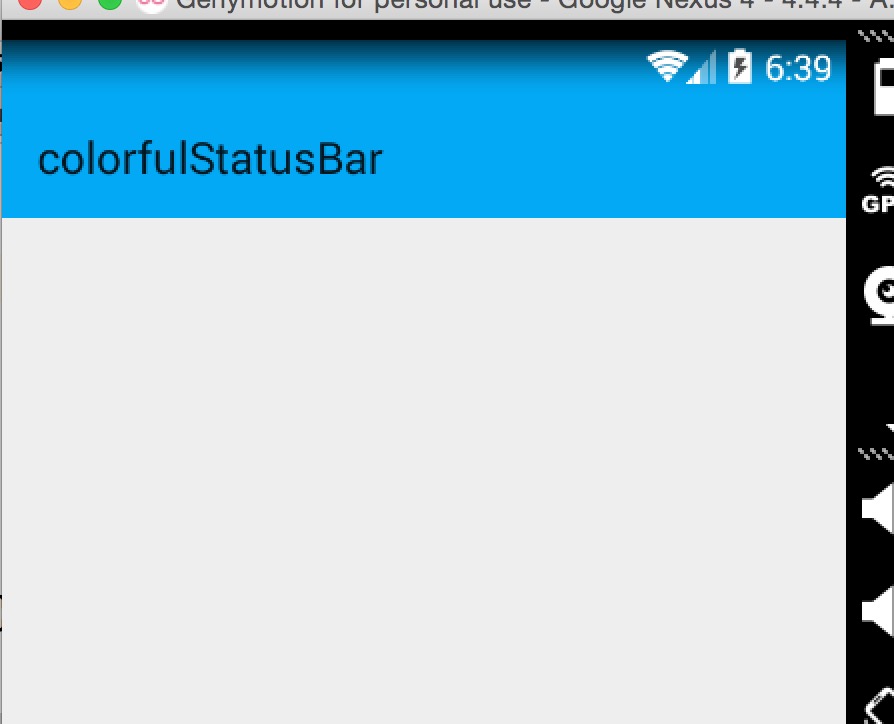
其实还不错,有个渐变的效果。
现在5.x的效果:
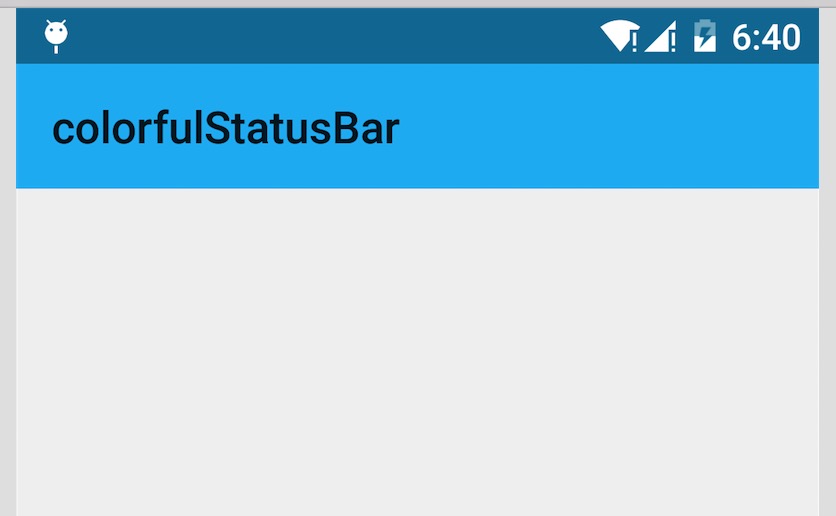
可以看到5.x默认并非是一个渐变的效果,类似是一个深一点的颜色。
在看看我们md的规范:
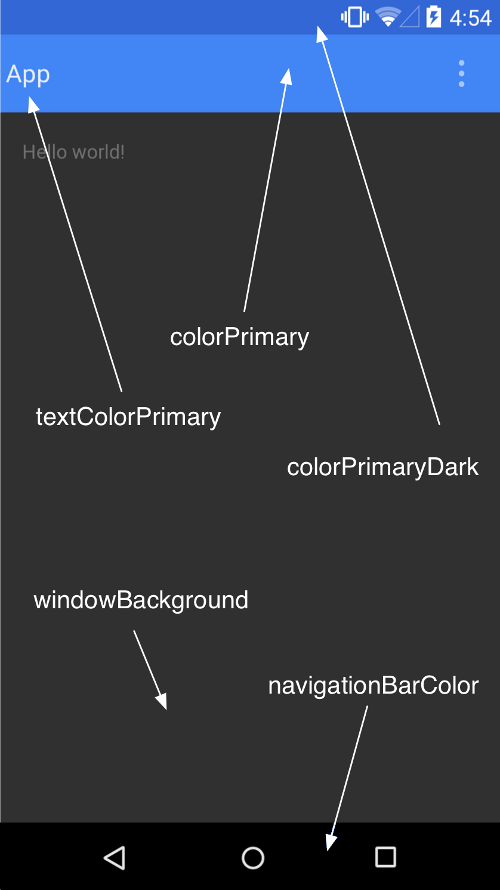
状态栏应该是一个比Toolbar背景色,稍微深一点的颜色。
这么看来,我们还是有必要去为4.4做点适配工作,让其竟可能和5.x显示效果一致,或者说尽可能符合md的规范。
三、调整4.4的显示方案
那么问题来了?如何做呢?
咱们这么看,4.4之后加入windowTranslucentStatus的属性之后,也就是我们可以用到状态栏的区域了。
既然我们可以用到这块区域,那么我们只要在根布局去设置一个与状态栏等高的View,设置背景色为我们期望的颜色就可以了。
于是有了以下的代码:
package com.zhy.colorfulstatusbar;
import android.annotation.TargetApi;
import android.app.Activity;
import android.content.Context;
import android.graphics.Color;
import android.os.Build;
import android.view.View;
import android.view.ViewGroup;
/**
* Created by zhy on 15/9/21.
*/
public class StatusBarCompat
{
private static final int INVALID_VAL = -1;
private static final int COLOR_DEFAULT = Color.parseColor("#20000000");
@TargetApi(Build.VERSION_CODES.LOLLIPOP)
public static void compat(Activity activity, int statusColor)
{
if (Build.VERSION.SDK_INT >= Build.VERSION_CODES.LOLLIPOP)
{
if (statusColor != INVALID_VAL)
{
activity.getWindow().setStatusBarColor(statusColor);
}
return;
}
if (Build.VERSION.SDK_INT >= Build.VERSION_CODES.KITKAT && Build.VERSION.SDK_INT < Build.VERSION_CODES.LOLLIPOP)
{
int color = COLOR_DEFAULT;
ViewGroup contentView = (ViewGroup) activity.findViewById(android.R.id.content);
if (statusColor != INVALID_VAL)
{
color = statusColor;
}
View statusBarView = new View(activity);
ViewGroup.LayoutParams lp = new ViewGroup.LayoutParams(ViewGroup.LayoutParams.MATCH_PARENT,
getStatusBarHeight(activity));
statusBarView.setBackgroundColor(color);
contentView.addView(statusBarView, lp);
}
}
public static void compat(Activity activity)
{
compat(activity, INVALID_VAL);
}
public static int getStatusBarHeight(Context context)
{
int result = 0;
int resourceId = context.getResources().getIdentifier("status_bar_height", "dimen", "android");
if (resourceId > 0)
{
result = context.getResources().getDimensionPixelSize(resourceId);
}
return result;
}
}
代码的思路很简单,根据Activity找到android.R.content,在其中添加一个View(高度为statusbarHeight,背景色为我们设置的颜色,默认为半透明的黑色)。
那么只需要在Activity里面去写上:
StatusBarCompat.compat(this);
就可以了。
如果你希望自己设置状态看颜色,那么就用这个方法:
StatusBarCompat.compat(this, getResources().getColor(R.color.status_bar_color));
这样的话我们就解决了4.4到5.x的适配问题,一行代码解决,感觉还是不错的。
最后提一下,对于5.0由于提供了setStatusBarColor去设置状态栏颜色,但是这个方法不能在主题中设置windowTranslucentStatus属性。所以,可以编写一个value-v21文件夹,里面styles.xml写入:
<resources> <!-- Base application theme. --> <style name="AppTheme" parent="@style/BaseAppTheme"> </style> </resources>
其实就是不要有windowTranslucentStatus属性。
接下来,对于默认的效果就不测试了,参考上面的效果图。
我们测试个设置状态栏颜色的,我们这里设置个红色。
4.4模拟器
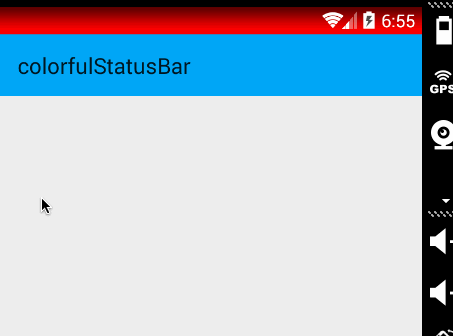
5.x 真机
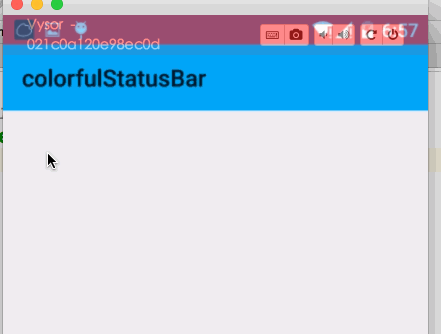
ok,这样就结束啦~~
- 上一篇文章: Android实现在子线程中更新Activity中UI的方法
- 下一篇文章: 解析Android中Animation动画的编写要点
- 一看就喜欢的loading动画效果Android分析实
- Android开发中优秀的app 异常处理机制
- Android开发中的9个常见错误和解决方法
- Android实现创建或升级数据库时执行语句
- 21天学习android开发教程之SurfaceView与多
- Android 七种进度条的样式
- ListView实现顶部和底部内容指示器的方法